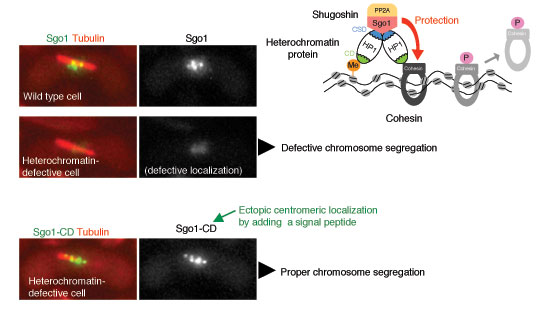Heterochromatin protect centromeric cohesion by recruiting shugoshin
During cell division, it is important that replicated chromosome copies (sister chromatids) are separated to daughter cells. For this purpose, centromeric cohesion has to be preserved to ensure the bi-polar attachment of kinetochores to spindle microtubules. Shugoshin plays a crucial role in protecting centromeric cohesion and thus in ensuring proper chromosome segregation. On the other hand, it is well known that heterochromatin is formed in the vicinity of the centromere, while its crucial role has been elusive. Here we demonstrate that heterochromatin protein HP1 associates with shugoshin and recruits it to centromeres, which turned out to be a major function of heterochromatin. We discovered this in fission yeast but also demonstrated that this mechanism is conserved in human cells. These findings will be useful to understand the molecular mechanism of eukaryotic chromosome segregation.
Program member
Yoshinori Watanabe (Institute of Molecular and Cellular Biosciences)

Centromeric localization of Sgo1 decreases in heterochromatin-defective cells, while the recovery of Sgo1 localization by the addition of centromere-localizing signal peptide restored chromosome segregation defects in heterochromatin-defective cells.
